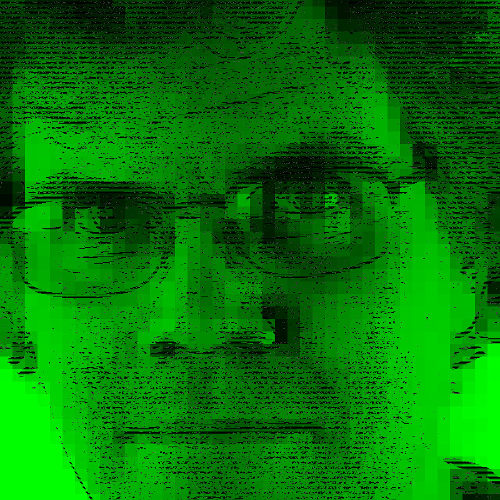It's the autobiography of Ed Smith, one of the first African-American people to work in electronics design, video games, and personal computers. Dude grew up in a then-bad neighborhood and seemed destined for a life of crime. Instead, he became a big-time nerd, made an honest living, and moved his mom to a better neighborhood.
Smith grew up in the Brownsville neighborhood of Brooklyn. This was decades ago, when crime in the USA was a real problem. (Nowadays when some fear-mongering pundit screams about crime, everyone gently tells him that crime is down: Smith grew up back before crime was down, pretty much at USA peak crime.) At the time Brownsville was poor; and poor meant crime-ridden. Crime was the best-paying but riskiest career path among the main ones. "Why were the men in my world confined to one of three primary roles; criminal, priest, or laborer?" Even if his mom could have afforded to move to a richer neighborhood, there weren't many choices; black folks caught after sundown in white neighborhoods got harassed. Not that Brownsville was harassment-free; Smith was mugged regularly. The local cops were no help against muggings; instead they were known for police brutality, false arrests and "accidental" deaths.
Smith luckily heard about Westinghouse High School, a local school for nerds. (He heard about Westinghouse from a basketball coach who, luckily, was also a youth counselor who actually had some good counsel.) I, a naive privileged reader thought Ah, now he'll be on the straight and narrow path out of the ghetto and into the world of nerdy electronics, but it wasn't so. He did learn electronics, but nobody showed him a path forward to nerditry. From his peers, he had plenty of paths forward to crime, though; that was his society's default route. But some peers pointed him at "the works of King and Garvey, why Malcolm X was so misunderstood." Thus, he learned that society's default route wasn't in his best interest. He volunteered at a Black Panther Party food center. He noticed that the media reporting about the Black Panther Party was disconnected from reality. A priest at the Moorish Science Temple steered Smith towards an effective life. He gets the idea that he will need to make his own plans; those plans might not work out, but he will need to keep steering towards goals.
After high school, he landed a job as a wiring technician at Futuronics, a defense contractor. I again thought Ah, now he'll be on the straight and narrow to nerd-dom but then the contract ends and he's out of work. Meanwhile, he was still surrounded by peers from the neighborhood, a sizable fraction of whom are criminals. These people didn't understand or respect his electronics skills, but rather mocked them. Smith made money-laundering deals with local merchants to hide a friend's drug money (not exactly on the straight-and-narrow path to a happy life…).
Smith lands another job testing wiring at a place that makes traffic signal control circuits, back when those were wired by hand. He takes electrical engineering classes at NYC College of Technology. At work, he learns about a then-cutting edge new technology: microprocessors. He realized that his college E.E. classes are becoming obsolete; he switched to taking computer science classes at Pace; he also studied marketing there. His path to comfortable nerd-dom was neither straight nor narrow but he kept at it.
He went to work for APF Electronics and worked on their Imagination Machine game console. This is back in the day when Real Engineers had to lay out circuit designs by hand. Here, Smith's experience feels familiar to me. Though he designed hardware and I work in software, he thought hard, tracked down bugs, iterated, figured out how to connect his stuff with coworkers' stuff, etc.
He moved out of Brownsville. You might wonder "Why didn't he stay behind and try to make things better?" By this point, he'd lost patience with neighbors who mocked him for tinkering. He did help folks back in the neighborhood, but he also gets himself the hell out of there.
At APF, he started straddling technical work with marketing. He gave demos at sales meetings. He talked to important customers; learned the social graces of business lunches.
At a convention (one of very few black folks in a sea of white), he was introduced to the Apple Steves.
Jobs never even shook my hand. He just nodded and walked over to another table. Woz, on the other hand, spent a good 5 minutes with me explaining why he designed the Apple with an open architecture. He pointed over to the Microsoft table, "See those guys? They are making good money selling their CP/M, video, memory and modem boards for Apple." Woz paused and started to walk away saying "We would never have been able to do all these things these firms are doing."
The Imagination Machine was a closed system. It didn't sell well; APF went out of business. Smith (and other APF engineers) had hoped to make an open system. And Apple's Woz had clarified that an open system wasn't just technically satisfying: it also made good business sense. If other folks could make good money building on top of your system, they'd encourage people to buy that system.
After APF goes under, Smith worked at Novell. He eases over from being a business-savvy engineer to more of a highly technical businessman. Taking the lessons of Apple's open architecture to heart, he managed some important inter-business alliances. After many years at Novell, he went to InfoSys, again managing large alliances. (Though this is satisfying work, here he kinda lost me as it was no longer work I was familiar with.)
It wasn't the typical nerd biography; I learned some things. Check it out.
